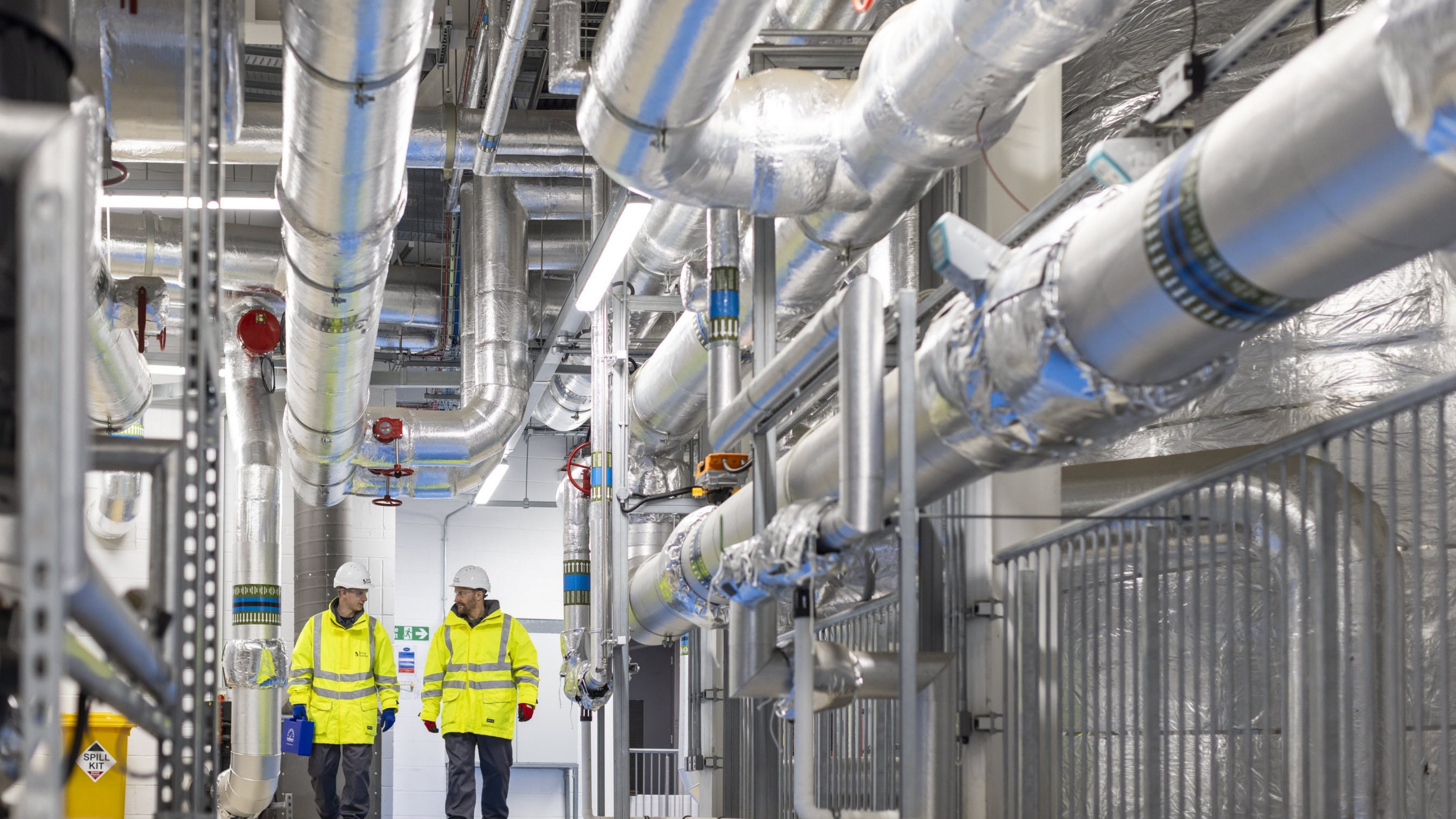The automotive sector is the third largest sector in the EUR HY bond market. At present, it mainly contains automotive suppliers and has a large proportion of higher credit quality in the BB area.
The automotive sector is assessed as stable for 2024 from a rating perspective and even has further recovery potential over the medium term in our view. However, it is exposed to cyclical risks and must also cope with the transition to CO2-free driving. This may lead to a slowdown in demand, lower profitability or a volatile development of credit quality.
Higher rating quality for automotive bonds in the EUR high-yield index
The size and structure of the high-yield indices1 in USD and EUR are quite different. The USD HY index is currently about 3.5 times the size of the EUR HY index. The three largest sectors in the USD HY index are energy, media and basic industry, while the heavyweights in the EUR HY index are the telecommunication, banking and automotive sectors. Furthermore, the share of BBs in EUR HY (69%) is higher than in USD HY (48%), while the share of CCCs is higher in USD HY (11%) than in EUR HY (4%).
The automotive sector – with its three sub-segments car loans, automotive suppliers and car manufacturers – has historically had a larger share in the EUR HY market than in the USD HY market. It currently accounts for 9% of the EUR HY index (11% on average since 2000) and only 2% in the USD HY index (3% on average). Volume fluctuations in the cyclical automotive index are mainly due to rating downgrades and upgrades, especially in the periods 2005–09 and 2020–23. After a period of consolidation and rating upgrades for some major issuers (such as Ford), automotive suppliers currently represent the lion’s share of the HY automotive segment with 78% in EUR and 81% in USD. This is well above the average of around 40–50% since 2000. The two automotive HY indices currently consist of a total of 32 different issuer groups, including automotive suppliers such as ZF Friedrichshafen, Schaeffler or Valeo and car manufacturers such as Jaguar Land Rover, Renault or Volvo. The rating quality of the HY automotive index in EUR is higher compared to the index in USD. The share of BB ratings in the HY automotive sector is 94% in EUR and 41% in USD, with the share of CCCs in the automotive sector in USD at 16% being higher than in the EUR HY index, where it is only 1%.
Automotive sector with further recovery potential over the medium term, but also cyclical risks
The automotive sector has traditionally been characterised by high volatility across business cycles. For example, the number of cars sold in the US has fallen from cyclical highs to cyclical lows in recent decades: by 24% (pandemic) and by 41% (global financial crisis). Although car sales have recovered over the past 12 months from the crises of recent years (pandemic, supply chain issues, geopolitical tensions), they are still 9% (global), 11% (China, US) and 20% (Western Europe) below their historical highs. Assuming that the number of units sold will return to its previous highs on a global level, there should be further recovery potential here over the medium term. However, offsetting effects must be taken into account. These include, for example, car-sharing or a decline in the importance of owning a car amongst the younger generation in developed countries, while sales in developing countries are expected to grow at an above-average rate.
US car sales


Global car sales


Downside risks, but mixed outlooks for car manufacturers and automotive suppliers
The car market in 2024 is shaped by a weaker macroeconomic environment and declining consumer confidence. This is due not least to the persistently high costs of living and borrowing money. A significant slowdown in demand could lead to a negative rating outlook for the automotive sector.
After global car sales improved by 10.8% in 2023 due to the elimination of supply chain problems, the rating agency Moody’s only expects more normal – and therefore weaker – sales growth of 1.6% and 2.1% for 2024 and 2025, respectively. Due to wage cost inflation, an increasing share of less profitable battery electric vehicles (BEVs) and negative mix effects (e.g. car buyers’ decision to opt for cheaper models), Moody’s expects lower profit margins for car manufacturers over the next 12 to 18 months compared to 2023.
For automotive suppliers, on the other hand, the rating agency expects organic sales growth in the mid-single-digit percentage range and an improvement in the sector’s profitability based on slightly increases in production and sales figures. In particular, profit margins in 2024 should be positively impacted by companies working through their existing order books (in some cases with a good share of new products with higher margins) and the price increases to pass on the higher input prices they have faced since 2022, as well as a high level of cost discipline and improved R&D cost efficiency. Automotive suppliers with a high share of spare parts and service business can benefit from the comparative resilience of this area during cyclical fluctuations in car manufacturing, which is a positive development from a credit perspective.
End of the internal combustion engine as an important credit factor in the automotive sector
Although the trend towards electrification – partly supported by state subsidies – has recently slowed, the share of battery-powered electric vehicles is expected to continue to increase over the long term. Together with a higher share of renewables in the electricity mix, BEVs are considered an important factor in reducing global CO2 emissions from transport. For example, from 2035 onwards, it will only be possible to register new cars in the EU if they do not emit any CO2 when being driven. The German government stresses that this does not rule out the possibility of fuelling internal combustion engines with climate-neutral, synthetically produced fuels (e-fuels) after 2035 if only renewable energies are used for this purpose2.
Fewer products for internal combustion engines, more for BEVs – this change means higher costs for most companies in the automotive sector (e.g. research and development; start-up, personnel and investment costs). When assessing the creditworthiness of an automotive supplier, it is therefore important whether it is able to offer products that are in demand for both cars running on fossil fuels and battery-powered vehicles (such as tyres or interiors). These products are less affected by the above-mentioned transition costs.
Automotive sector favoured in EUR high-yield index
The high-yield BB index is currently trading with a return of 6.4% in USD and 4.8% in EUR. The credit environment is still shaped by macroeconomic uncertainties, increased interest rate volatility and the recent sharp fall in credit risk premiums. For this reason, Swiss Life Asset Managers prefers higher credit qualities in the HY area, i.e. bonds in the crossover and BB area, as well as hybrid bonds (corporate hybrids, Tier 2 bonds) from stable and creditworthy issuers from the manufacturing and financial sectors that themselves have an investment-grade rating.
For high-yield automotive bonds, we favour the automotive sector index in EUR over USD. This is due to the above-mentioned higher credit quality thanks to the high proportion of BBs, as well as the higher credit spread in the high-yield BB area for EUR compared to USD.
Sources of figures: Bloomberg, WARD’s Automotive Group, Bureau of Labor Statistics, LMC Automotive
1 Source: ICE BofA Index
2 Combustion engines from 2035 only CO2-free | Federal Government (in german)




